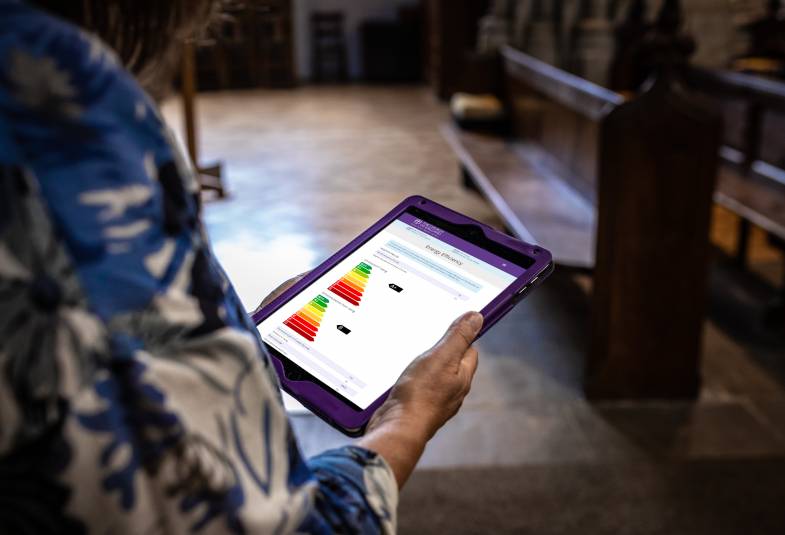
The Energy Footprint Tool has reopened for churches around the country to enter their 2020 utility bills, and find out their carbon footprint.
In February 2020, the General Synod announced an ambitious target for the Church of England to become net zero by 2030. The Energy Footprint Tool is an important step in measuring a baseline of current emissions, and to measure progress towards achieving this goal.
The tool was formally launched in April 2020 following a rigorous trial of test parishes. By the time the tool closed in October 2020, 38% of churches had engaged with it nationally and 50% of churches in the Diocese of Coventry. The results of the first year of the tool provided valuable information for the Church of England. It is estimated that the total net carbon footprint for the Church of England’s church buildings (based on energy use alone) is around 185,000 tonnes of greenhouse gases, measured in tonnes of carbon dioxide equivalent or tCO2e. This consists of 163,000 tonnes from church buildings alone (based on 44,000 tonnes recorded in the Energy Footprint Tool). An additional 22,500 tonnes is estimated for church halls and “other church buildings” (based on 3,400 tonnes recorded in the Energy Footprint Tool).
Church size and location has a large impact on carbon footprint. The top 13% of church buildings by size account for almost a third of the carbon footprint for all churches. Also churches in urban parishes have a much larger carbon footprint than those in rural parishes. Church usage also has a large impact on its carbon footprint: the higher usage of the buildings means the larger the carbon footprint.
Despite Covid restrictions closing churches for much of last year, churches are still encouraged to enter their data as it will still be useful for individual churches, diocese and the national church. Inside the tool is a special adjustment for the time spent in lockdown, which will mean firstly, a sensible comparison for the efficiency of a church’s energy consumption compared with their data from 2019, and also gives the Church of England a way to make sensible comparisons in future years.
The Energy Footprint Tool is available for all parishes using the Online Parish Returns System and only takes ten minutes to complete. The Diocese of Manchester have created a short instructional video in how to use it. To complete the tool, you will need to have the whole of last year's electricity and gas/oil bills. The Energy Footprint Tool will tell your church the amount of carbon produced annually by heating and lighting your church buildings. There are two useful graphs that show you your efficiency scores: one for energy efficiency based on building size and one for attendance. It can take account of separate buildings such as church halls, as long as you have the utility bills for them.
Click here to find out more and use the Energy Footprint Tool.